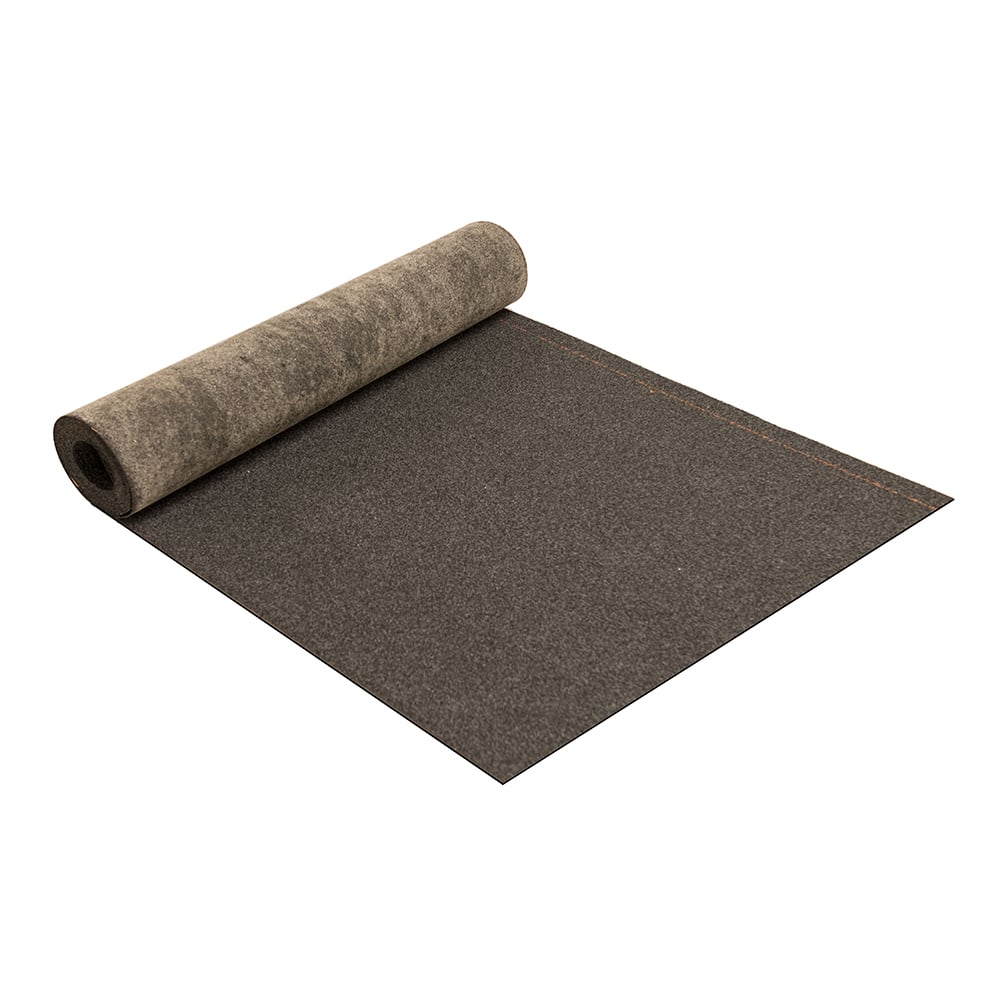
Fiberglass feels are made from cellulose fibres that have been impregnated by bitumen and asphalt. These materials are very resistant to tearing. They also hold up well in harsh weather conditions. The asphalt-impregnated fiberglass feel can sometimes be better than conventional roofing materials. However, fiberglass felts also have some disadvantages. This article will discuss some of the benefits and drawbacks of the material.
Fiberglass-reinforced shingles are an ideal choice for repairing and maintaining roofs. They resist pulling away from fasteners and curling, and are highly resistant to fire. Several manufacturers offer this material as part of their Total Protection Roofing System. Although it is more costly than organic shingles this roofing material is still worth it. It is the perfect choice for those who don't want to run the risk of leaking.

A superior roofing felt is heavier, but it will last longer and be safer to use. It comes in sheets that are wider than 36 inches and is more durable than fiberglass roofing sheets. Although this material is more expensive, it will reduce the need for seams and will save you money in the long run. You can also overlap the sheets by using some rolls with a printed line. It is an excellent choice for roofing projects because of these benefits.
A 30-pound fiberglass felt measures 72 feet in length and 3 feet wide. Each roll has two squares that weigh around 30 pounds each. Fiberglass felts are classified according to ASTM D226 and D4897. Asphalt-impregnated felts are best suited to low-sloped roofs because moisture can escape.
Fiberglass-impregnated felts are made from asphalt-impregnated fiberglass. Perforated felts have a transparent surface that allows water to drain from roof. Saturated felts are waterproof. This material is ideal if you have concerns about mold or rot. The advantage of using a felt is that it can be replaced more easily than fibreglass. It's also less expensive than fibreglass. A 30 pound roll can last approximately 10 year.

A fiberglass-impregnated felt is recommended for composite asphalt shingle roofs. It should not be used on wood-shingle roofs. It will prevent air circulation. Water will also collect which will affect the life of wood-shingles. According to manufacturers, a shingle roof doesn't require an underlayment. If you are not sure about the differences, consult a roofing professional. Remember to only work with reputable suppliers and to follow the manufacturer's instructions.
There are several advantages to using a fiberglass-fiberglass blend. High-quality blended felt will keep dust off the roof. It is cheaper than 100% aramid felt or pps feel. It is also resistant against fire and UV degradation. It lasts longer because it is stronger. In addition, it is easier to install than traditional asphalt-fiberglass-felt roofs. Its flexible, flexible composition makes it a great choice when installing steep-slope roofing.
FAQ
What should I look for when buying a home?
You need to ensure you have enough funds available to cover closing costs before you buy a home. You might consider refinancing your mortgage if you don't have enough money.
Is it more cost-effective to hire a subcontractor or a general contractor?
Hiring a general contractor is usually more expensive than hiring a subcontractor. General contractors have many employees so often charge their clients a high amount for labor costs. A subcontractor on the other side only employs one person, so he/she charges less per-hour.
How do I choose the right contractor?
Ask family and friends to recommend contractors. Check out online reviews. Check to make sure the contractor has experience with the type of construction you are looking for. Check out references and ask for them to provide you with some.
Are you able to live in a renovated house?
Yes, I can live in a house while renovating it
Is it possible to live in a house with renovations going on? The duration of the construction works will affect the answer. If the renovation takes less than two months, then you can live in your house while it is being built. You cannot live in the home while renovations are taking place if they last more than 2 months.
Because of the possibility of falling objects, you shouldn't live in your home while a major construction project is underway. There is also the possibility of dust and noise pollution from the heavy machinery at the job site.
This is especially true if your house has multiple stories. This is because the vibrations and sound created by construction workers could cause serious damage to your property.
As we mentioned, temporary housing will be necessary while your home is being renovated. This means you won't be able to use all the amenities in your own home.
For example, you will not be able to use your washing machine and dryer while they are undergoing repair. The workers will make loud banging noises, paint fumes, and chemicals obstruct your ability to use your dryer and washing machine.
These factors can cause stress and anxiety in you and your family. It is therefore important to plan ahead so that you don't end up feeling overwhelmed by the situation.
To avoid costly mistakes, do your homework before you make any decisions about renovating your home.
Also, it is a good idea to get professional help from a reputable contractor in order for everything to go smoothly.
How can I avoid being taken advantage of when I renovate my house?
The best way to avoid being ripped off is to know what you are paying for. Be sure to read the fine print before you sign any contract. Also, don't sign blank contracts. Always request copies of signed contracts.
Statistics
- According to the National Association of the Remodeling Industry's 2019 remodeling impact report , realtors estimate that homeowners can recover 59% of the cost of a complete kitchen renovation if they sell their home. (bhg.com)
- ‘The potential added value of a loft conversion, which could create an extra bedroom and ensuite, could be as much as 20 per cent and 15 per cent for a garage conversion.' (realhomes.com)
- They'll usually lend up to 90% of your home's "as-completed" value, but no more than $424,100 in most locales or $636,150 in high-cost areas. (kiplinger.com)
- Most lenders will lend you up to 75% or 80% of the appraised value of your home, but some will go higher. (kiplinger.com)
- A final payment of, say, 5% to 10% will be due when the space is livable and usable (your contract probably will say "substantial completion"). (kiplinger.com)
External Links
How To
How to renovate an older house
First, you need to decide what kind of renovation you want. This could mean anything from replacing your kitchen appliance to completely redesigning the house.
Once you've decided on the type of renovation that you want to do, it is time to consider how much money your budget allows you to spend. You might find that you don't actually have enough funds to cover the full cost of the entire project. If this is the case, then you need to make some tough decisions about which areas of the house you can afford to improve and which ones you can't.
Before you make the decision to carry out renovations, there are some things that you should do. The most important thing is to ensure that you get any permits required for the job. Also, check to see if you need planning permission in order to do certain types work. To add extensions to your home or make other changes, you might need building consent.
Before you start work on the house it is best to check with the local council website to determine if additional permits are required. You should also check whether you require planning permission for any part of the house you plan to renovate. For major projects like a new roof installation, your insurance provider may need to be contacted to confirm that you have adequate coverage.
Next, you will need to decide on the tools and materials that are best suited for your job. There are many choices available so make sure to do your research thoroughly. Most people use wallpaper paste, paint, flooring, tiles and carpets for their renovation projects.
When choosing these items, remember to look at the quality of the product. Quality products last longer than cheaper products and are less expensive. When you are buying any item, ensure that you only purchase what is necessary for the job. It's important to not buy too much. You could waste valuable resources and end up with a lot of wasted material. Instead, purchase only what you need.
Finally, once you've chosen the right materials for the job, you need to figure out where you'll store them while you're working on the property. If you're planning on renovating a large space of your house, you might need storage space. You could also ask your family or friends for help moving the items.